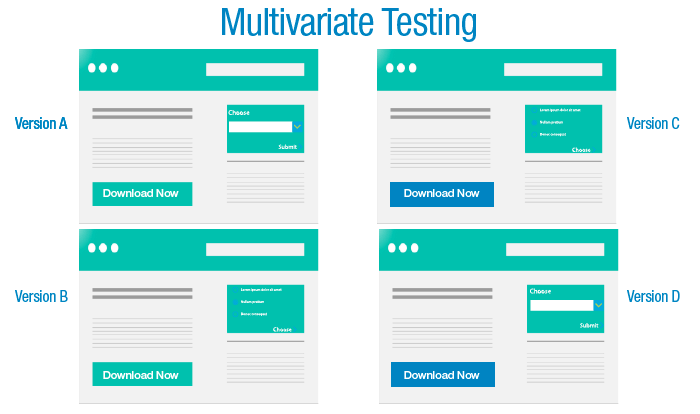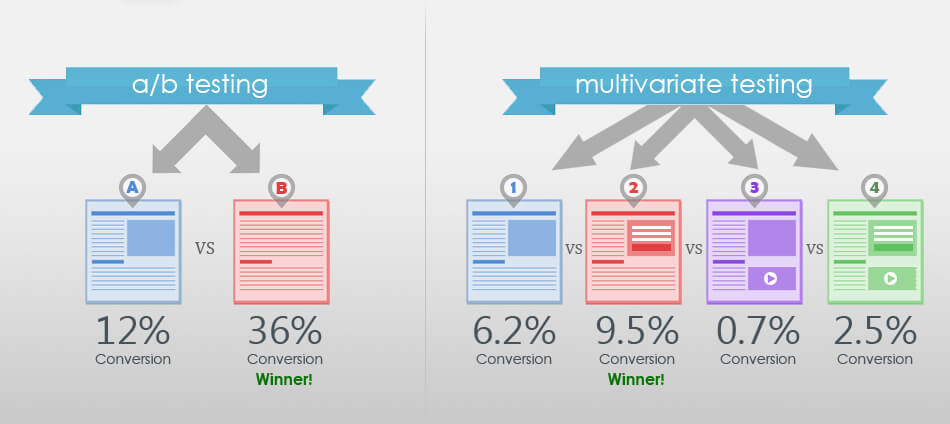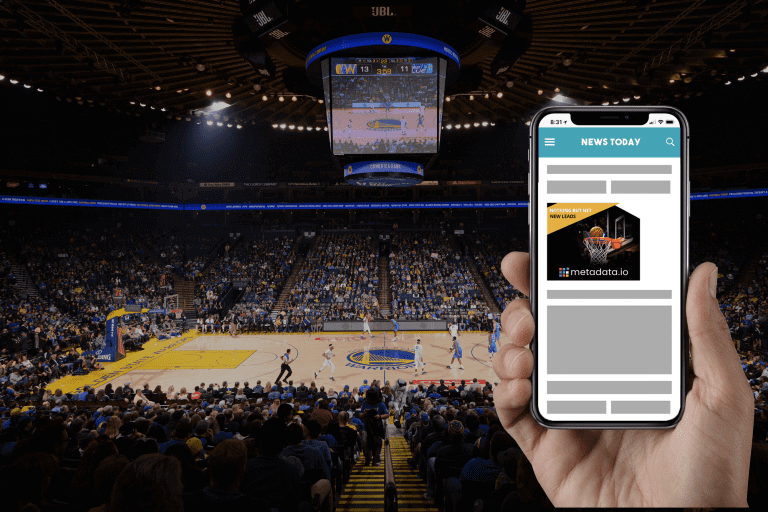Examples of Multivariate Testing in Marketing
In a previous post, we talked about what multivariate testing is, and how it helps with selling. To review, this sophisticated marketing science gives you more insight into what’s going to work best to attract customers and grow your business. That’s a big help when you want to make sure that your company continues to grow sales pipeline and revenues.
Multivariate testing (MVT) is especially important in B2B marketing due to the complex nature of business purchasing decisions. Unlike consumer purchases, which can be impulsive, B2B transactions require careful consideration from various decision-makers. MVT allows marketers to evaluate multiple variables simultaneously, such as headlines, images, calls-to-action, and content placement, to identify optimal configurations that resonate with different stakeholders.
Here are some examples of how multivariate testing can be applied to marketing.
New Audiences and the “Smart” Sales Funnel
One situation where a good multivariate test can increase conversion and revenue is with a new audience segment. Imagine a scenario where a brand receives a significant influx of attention due to a major celebrity endorsement or high-profile feature. This kind of exposure often brings in a wave of new customers who may not yet be familiar with the brand’s offerings.
So what does multivariate testing have to do with it? In cases like these, marketers can approach the opportunity by tailoring content and messaging to educate and engage this new audience segment. By testing various combinations of visuals, messaging, and calls-to-action while monitoring key metrics, companies can optimize their approach and make the most of the increased attention.
In B2B marketing, similar strategies can be implemented to engage new audience segments.
This approach led to increased engagement rates, conversion rates, and revenue from targeted accounts.
Creating the Perfect Ice Cream Sundae – or Marketing Email
The value of multivariate testing is about combinations.

Suppose a company is trying to design the perfect direct email campaign, and focusing in on one initial email with its content and layout. Let’s make it a company with a cutting-edge product – a smartphone app that helps with residential and commercial real estate. How do the business leaders get people to try it out?
Over at Mailjet, Bea Redondo Tejedor points out how this is likely to go. Marketers can look at every aspect of the email, to try to tie them together in the best possible way. They’ll see which “flavors” go together and attract the customer’s attention. By contrast, they will also see which flavors don’t go together at all. A particular call to action may be jarring after a given headline. With good multivariate testing, marketers get to the bottom of how to optimize their content – and that adds enormous value to a campaign.
The Retailer’s Seasonal Schedule
Here’s another case study that shows the value of multivariate testing.
A retail shop in a small town (called Bob’s Family Store) sells all sorts of convenience items. The business also has an online store where e-commerce marketing is a major driver for the business.

In both of these aspects of the business, the business owners are looking at the calendar to figure out when best to target their audience in the community. They’re doing particular kinds of marketing on holidays and weekends. Before Black Friday, they’re busy for a week solid pushing a ‘buy local’ message to take advantage of that one big shopping day.
This is another situation where multivariate testing can make all the difference. This local retailer needs their messages to be optimized. They need to pack the biggest punch possible on certain days, and at certain times of the day.
This page from Marketingland goes into more details about using multivariate testing to work on an annual or seasonal schedule – pointing out that it might come down to something as simple as different “Buy Now” or “Sale” buttons online around holidays like Easter, Christmas, Halloween or Thanksgiving. The piece also points out that “reducing barriers to purchase” is one of the best ways to streamline conversion and boost the deal-making power of a business.
Selling Tech Services
Retailers are generally most interested in multivariate testing to reach their consumer audiences – but multivariate testing is rapidly moving into the B2B domain.
In this particular case study, a hosting company performed multivariate testing on it’s content to significantly improve lead conversion rates.
In a blog post, one of the business leaders reveals the key results in terms of conversion rates that run the gamut from 2.7% to an impressive 7.5%.
You can see how the company, Hawk Hosting, played with particular title content, bullet points and graphic design in order to get these hard results.
These case studies give you a window into how much small design changes affect customer mentality.
We know that marketing is a complex science – but now detailed multivariate testing can tell us a lot more about how that very complex science works.
The case studies above all have a common takeaway: multivariate testing can take a lot of manual effort and time to complete.
The Science Behind Multivariate Testing
MVT relies on statistical significance to validate results. A result is typically considered significant when the p-value is below 0.05, indicating a less than 5% chance the effects occurred by random chance. This ensures that changes are based on real patterns rather than coincidences.
There are two primary MVT approaches:
- Full Factorial Testing: Tests every possible combination of variables but requires larger sample sizes and resources, ideal for fewer variables or large audience pools.
- Partial Factorial Testing: Tests a strategic subset of combinations, practical for complex campaigns with multiple variables, requiring fewer resources.
Pay close attention to the sample size calculation. Tests need to account for the expected effect size, number of variables, desired statistical power, and audience characteristics. Balancing the sample size against typically smaller B2B audience pools is necessary because smaller audience pools can lead to unreliable data, while overly large samples may waste resources. A well-calculated sample size leads to more accurate insights and efficient use of your time and budget.
Effective variable selection involves analyzing historical data to identify high-impact elements, prioritizing variables likely to influence your audience, considering interactions between elements, and focusing on variables aligning with campaign objectives. Limiting variables ensures manageable tests and interpretable results.
Multivariate Testing for Demand Generation
Unfortunately, many companies don’t have the in-house staff and the time to set up and run multivariate test campaigns, so they settle for relatively simple A/B testing. A/B testing can improve conversion rates, but it will take longer to see results.
Forward-thinking marketers are therefore taking advantage of next-generation demand generation solutions like metadata.io, that use machine learning and artificial intelligence to automate multivariate testing, and free up marketers to focus on higher-value activities.
Implementing a multivariate testing strategy involves several key steps:
Initial Setup and Planning
Establish clear objectives and KPIs, such as lead generation or engagement rates. Identify variables impacting decision-making, like headlines, CTAs, and content layout. Create a testing calendar with sufficient duration for data collection, especially given longer B2B sales cycles.
Technical Requirements and Tool Selection
Ensure your technical infrastructure includes analytics, reliable website infrastructure, user segmentation capabilities, and integration with your marketing stack. Platforms like Metadata.io can simplify this process by automating data-driven campaign management, enhancing segmentation, and streamlining integration across your tech stack for more efficient and effective marketing.
Common Challenges and Solutions
One common challenge in B2B marketing is dealing with limited data volume, especially when working with smaller audience pools. To address this, focus on high-traffic pages and extend test durations to ensure statistically significant results. Another hurdle is obtaining stakeholder buy-in, which can be overcome by presenting case studies and starting with small-scale tests to demonstrate value.
Additionally, resource constraints often limit testing capabilities, but this can be mitigated by automating repetitive tasks, prioritizing high-impact variables, and using tools that integrate seamlessly with your existing marketing stack.
By following these guidelines, you can build a successful multivariate testing program that delivers meaningful insights and drives demand generation.
See Metadata.io in Action
Multivariate testing is an invaluable tool for optimizing B2B marketing strategies, offering a deeper understanding of how different variables impact engagement and conversions. By applying MVT across various touchpoints—such as emails, landing pages, and content—businesses can fine-tune their marketing efforts for maximum effectiveness. However, the complexity and resource demands of running multivariate tests can be overwhelming, especially for organizations with smaller teams or limited data.
This is where Metadata.io can make a significant difference. By automating multivariate testing through its AI-powered platform, Metadata.io helps marketers streamline their testing process, integrate with existing tech stacks, and focus on high-impact activities.
This combination of automation and machine learning empowers businesses to optimize their demand generation campaigns efficiently, overcoming the challenges of limited resources and ensuring better, data-driven outcomes.Transform your marketing strategy with Metadata.io — drive more leads, optimize campaigns, and scale your results effortlessly. To get started, book a demo.


